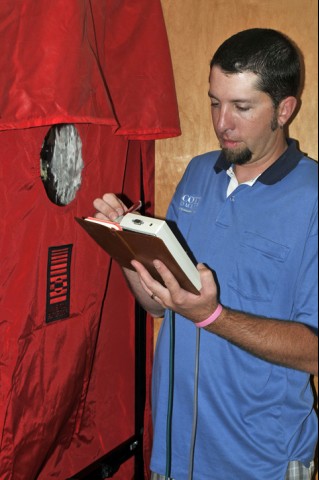Why Air Sealing Is Important
Why Air Sealing is Important
Having your home properly air sealed is critical to your energy conservation efforts and greatly impacts your utility bills. You can save up to 30% of your energy costs by air sealing multiple points of your home where energy losses occur. Additionally, air leaks are also a major cause of discomfort, moisture problems and even poor air quality. Ultimately you will feel the difference and make your home a more pleasant place to live.
Where Air Leakage Occurs
The US Department of Energy shows how much air leakage occurs in various locations of an average American home:
- Ceiling, Walls and Floors – 31%
- Ducts – 15%
- Fireplace – 14%
- Plumbing Penetrations – 13%
- Doors – 11%
- Windows – 10%
- Fans and Vents – 4%
- Electrical Outlets – 2%
These figures provide you with the most important areas to target for air sealing. However, a home energy assessment will pinpoint the exact locations of air loss and assess your entire home’s energy consumption and waste, and recommend ways to improve your home’s energy efficiency.
Exterior of Your Home
The exterior of your home is often referred to as the "envelope" or the "shell". Sealing your home against air infiltration (air leaking in from the outside) and air ex-filtration (air leaking from inside of the house to the outside) helps to reduce your energy expenditures.
As a homeowner, you can greatly improve your home’s energy efficiency by sealing as many entry points as possible. Check seams between the top of the foundation wall and the wood framing, doors and windows, along baseboards, through electrical receptacles and switches mounted on exterior walls, fireplaces, laundry chutes, attic hatchway doors and pull-down stairs, whole-house fan installations and pipe and wire penetrations.
It is recommended to consult a RESNET certified energy auditor, like Colorado Energy Analysts, to test for air leaks using a "blower-door test" to accurately measure air leakage of your house. The test is done by temporarily de-pressurizing the house to get an accurate measurement of how much air is entering the house through cracks, gaps and holes. The auditor will also use a device called a smoke pencil to pinpoint where air is entering the house while the blower door is in operation.
Jon Howes
Professionally Certified

BPI Certified Building Analysts
RESNET Certified HERS Rater
RRP - Certified Lead Paint Renovator
Colorado Energy Analysts
Certified Energy Rater
Scott Homes, Ltd., Designers & Builders
Construction Superintendent
 |
 |
 |
Schedule An Inspection
By Phone or Email we can schedule the services you desire to begin saving money on your utility bills!
Contact Us Online
Email us at info@ColoradoEnergyAnalysts.com
© Copyright 2013-2024 - Colorado Buys Local Inc | Designed for Colorado Energy Analysts